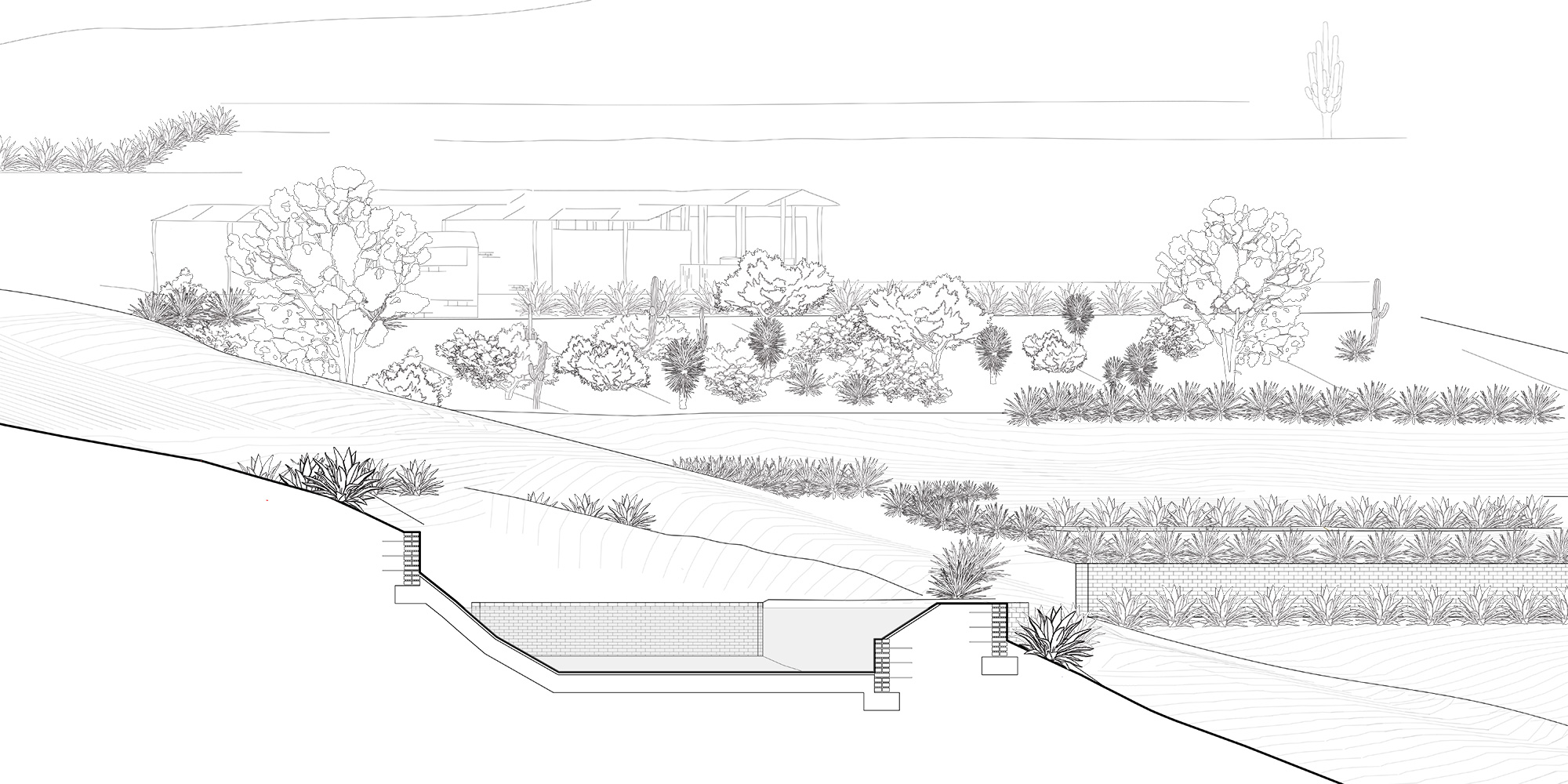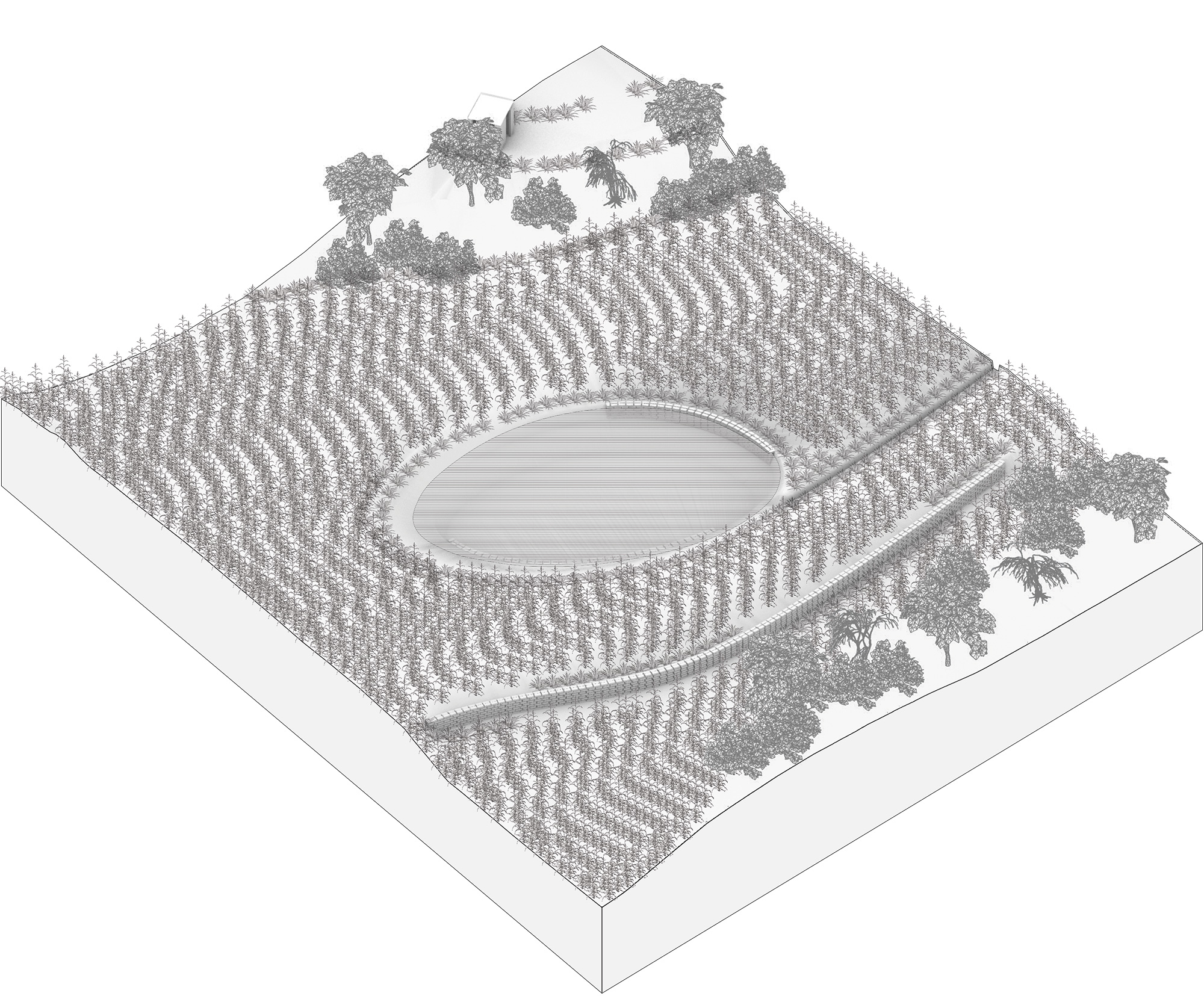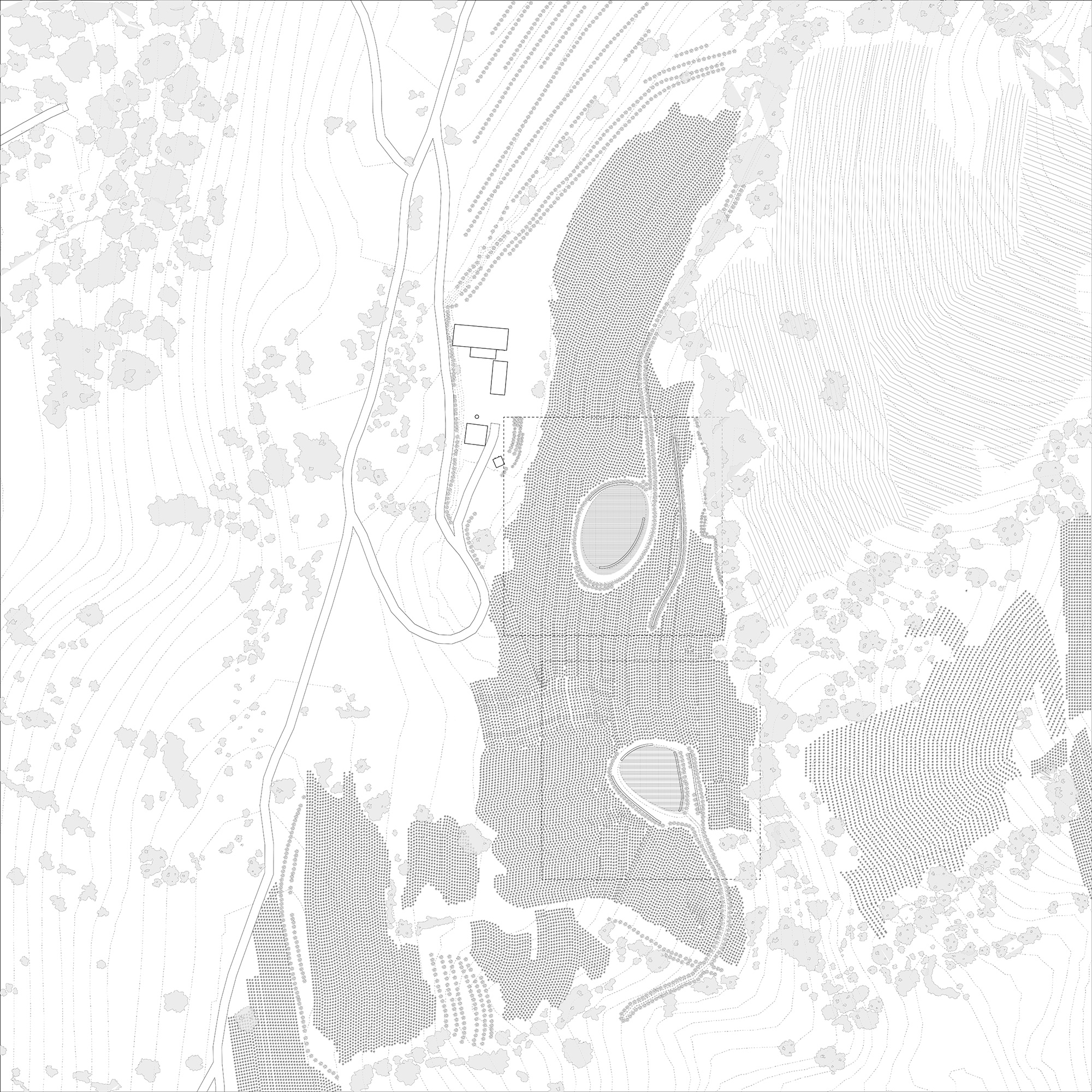
Ted Marchant, "Rainwater Capture and Storage Strategies: Supporting Subsistence Agriculture in Agua Del Espino"
This studio — "Adobe Bricks, Mezcal and the Arid Landscape of Oaxaca´s Central Valley," taught by sessional lecturer Elisa Silva — took students on a class trip to Oaxaca's Central Valley, an arid region where local farmers have begun producing mezcal (a distilled spirit made from the juice of agave plants) for export. Students learned about the mezcal production process firsthand from Herminio Coronado, the maestro of a mezcal-producing palenque.
During a site visit to Herminio's palenque, students learned a technique for using the waste products of mezcal production — fibrous pulp and acidic liquid — to produce adobe bricks, a traditional Mexican construction material. Their assignment was to devise a way of using those adobe bricks to build something of economic or cultural value for the Central Valley community.
As a landscape architecture student, Ted was interested in finding ways to use landforms to address the Central Valley's chronic problems with water access. Many of the area's farmers depend upon their own homegrown squash, beans, and corn for sustenance. But the region's short rainy season, in spring and early summer, doesn't provide enough irrigation to maximize crop yields.
"When we were in the Central Valley," Ted says, "our instructor, Elisa, took us to visit two large reservoirs that had been constructed using federal money. Giant, earth-moving operations had created these basins into which water was supposed to drain. In both cases, it worked for the first few years and then, after year five, the basin was empty. They suspected that the issue was that agricultural production in the area had increased. I surmised that there were more people in the area tapping into the water table and draining it."
"All of that led me to think that my role could be in developing a technocratic approach to looking at how subsistence farming is occurring, and how it can be ameliorated so that water availability for irrigation is not a reason for shifting away from subsistence agriculture."
Using weather data, Ted calculated the approximate amount of rainwater that would fall on a typical piece of land in the Central Valley. He determined that capturing most of that water in a single reservoir would be too complex a construction project for an individual farmer. He wanted his design solution to be simple enough that it could be built without government assistance.
Through research, Ted discovered that the local growing season was about five months long. Three of those months produce more than enough rainfall for crops, while the other two produce significantly less rainfall than necessary. In order to intervene successfully, he reasoned, all he needed to do was capture enough surplus water to carry crops through that two-month water-deficit period.

One of Ted's retention ponds.
Using Herminio's land as a project site, Ted decided to design the smallest possible retention pond — tiny enough to be built on a small budget, with hand labour and light construction equipment, but big enough that it could hold enough water to maximize crop yield on Herminio's land. A single small pond wouldn't meet Herminio's needs, so Ted ended up designing two of them, each with a volume of about 100 cubic metres. "Having two ponds allowed me to maximize the collection of water while minimizing the number of required drainage ditches," Ted says.
"The placement of the ponds was determined by the existing topography on the site, to operationalize the existing drainage patterns and trap water where it's already approaching a low point," Ted says. Locating the ponds at natural drainage points would minimize the amount of required excavation. As for those adobe bricks that students were required to find a use for: Ted's design employs them in retaining walls around the steeper parts of the edges of each reservoir.

Ted's site plan.
As a final touch, he lined his new ponds and ditches with hedgerows of agave plants, where their roots could help shore up the soil and guard against erosion.
Instructor: Elisa Silva

